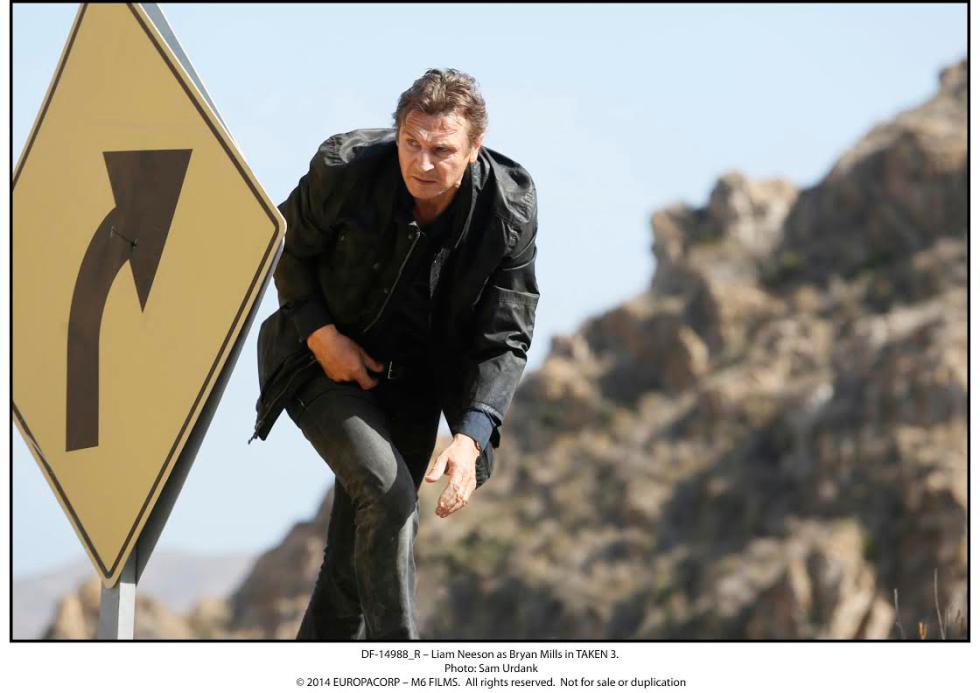Any career that lasts long enough is sure to have its share of ups, downs, and surprises. Sometimes we come out on top, sometimes we fall flat on our face. Most of us, though, have the blessing of soaring or falling with a bit more privacy than the actors and actresses we look to for our entertainment. A bad picture can follow them around like a stink cloud, even if most people never see it. Call it the Gigli Effect.
But the opposite can be true, too—the right picture can revitalize a career. For Liam Neeson, the Taken series has proved to be a late-career bonus that has turned the Schindler’s List actor into an unlikely action hero, one whose weathered mien has struck a chord with audiences perhaps tired of action stars who look like action figures. (See too his turn in the man vs. wolves film The Grey.) Instead of a Schwarzenegger-style stud strutting through a jungle somewhere, Neeson’s hero more closely resembles your high-school friend’s dad getting ready to light up the grill.
For the Taken movies, that paternal tinge has been just right — Neeson’s character Bryan Mills is an ex-secret agent who, at the start of this third installment, shows up at his daughter’s door with a giant stuffed panda as a birthday surprise. In true dad fashion, he doesn’t seem to realize that her stuffed animal years are far behind her. This is the same daughter who Mills saved from human traffickers back in the original Taken; later, he compares notes on her with her mother — his ex-wife Lenore (Famke Janssen), who was herself taken in the second film. (Spoiler alert: he saved her too.)
And here is the point where Taken 3 runs into a little problem: there is nobody left to take. While the first two films had the built-in suspense of a threatened captive, the violence here comes early and definitively; one of his family is murdered and Mills is framed for the crime. The remainder of the film is taken up by his pinballing around Los Angeles as he tries to clear his name and bring the killers to account. And while the other films had Paris and Istanbul as their backdrops, the scenery here is a tad more prosaic: we get a lot of shots of Forest Whitaker’s police detective coordinating the manhunt for Mills.
To be clear, this film’s predecessors may not have been masterpieces, but they had a relentlessness and physical vigor that carried the viewer along; here, that sense of urgency has ebbed. The film’s tag line is “It ends here,” and I have to hope that the filmmakers mean it. Taken may have made Neeson an action hero, but I can’t help but think of how Rocky made Sly Stallone a star as a boxer — until the same series, taken too far, turned him into a punch line.
Also this week: Amherst Cinema screens a Saturday morning showing of Willy Wonka & The Chocolate Factory. Director Mel Stuart’s 1971 film (originally backed by food giant Quaker Oats, which was hoping to cash in on a promotional tie-in to a new candy bar) is that rare family movie that doesn’t pander to any age. As odd and individual now as it was when it was released, Roald Dahl’s tale of an eccentric confectionary magnate (played to perfection by Gene Wilder) and his strange factory — containing a chocolate river and a race of orange-skinned Oompa-Loompas that help create Wonka’s candies — has sparked imaginations for half a century. Less glossy than the 2005 Tim Burton remake, the original has a magic of its own that, like an Everlasting Gobstopper, has stayed unchanged for decades. The show starts at 10 a.m., so get your candy early.•
Jack Brown can be reached at cinemadope@gmail.com.



